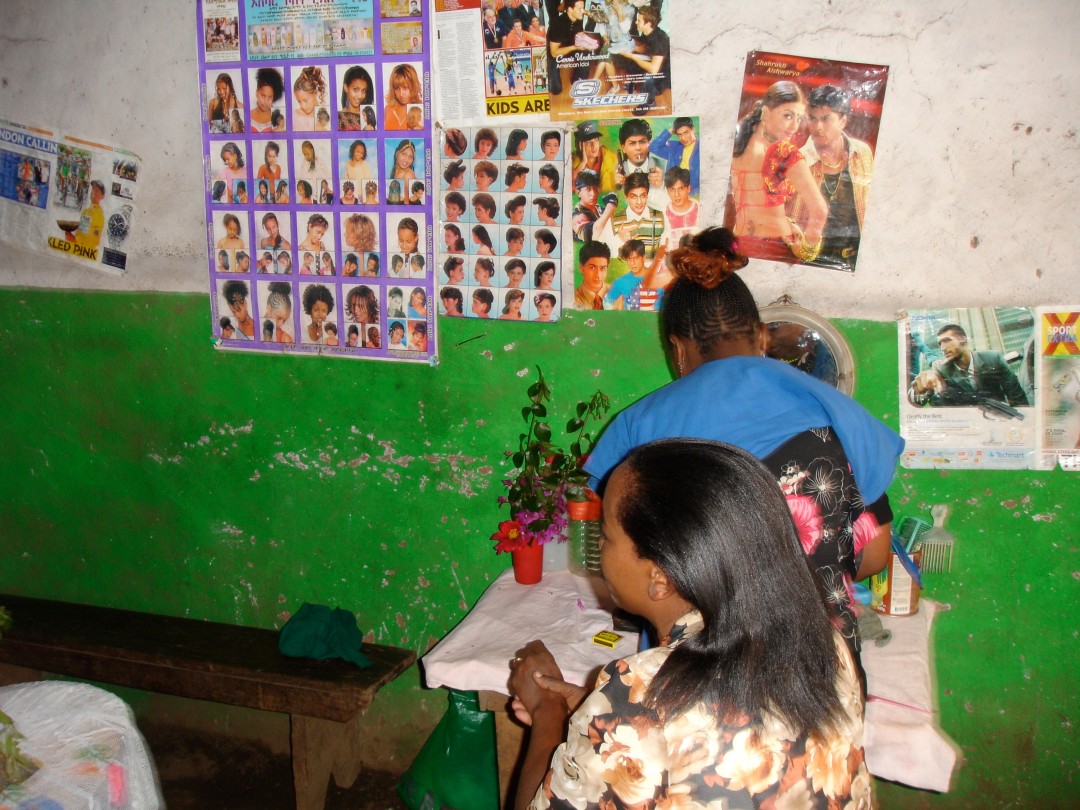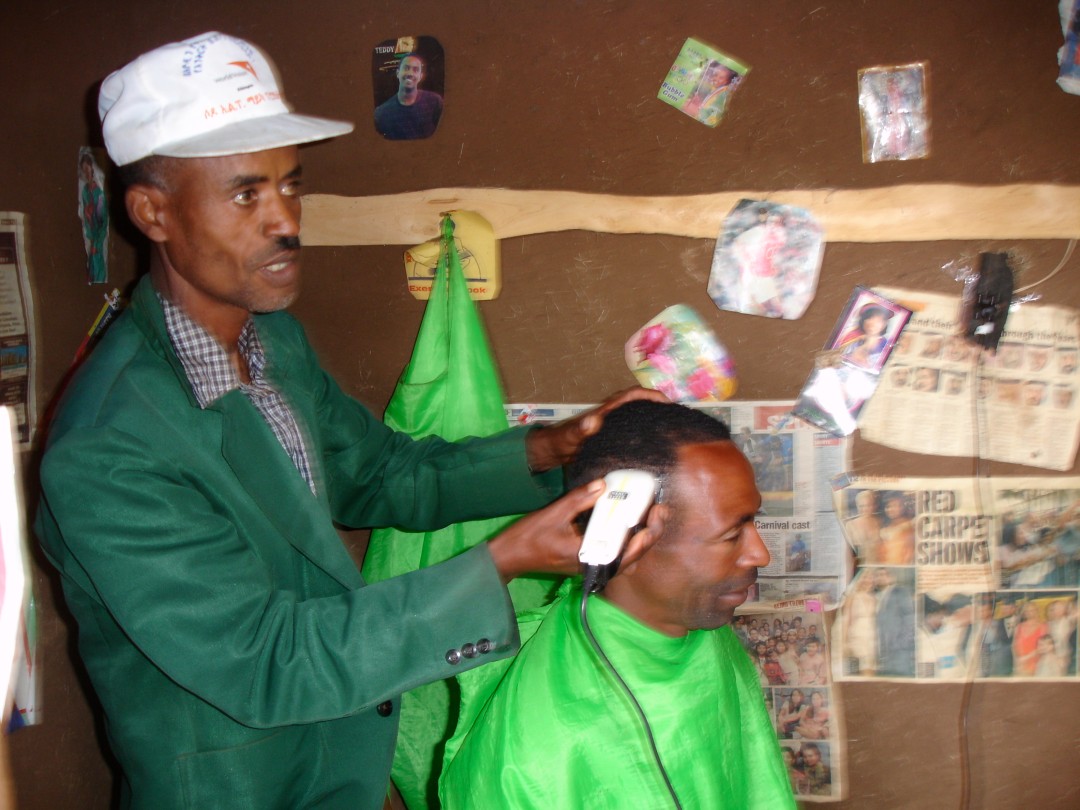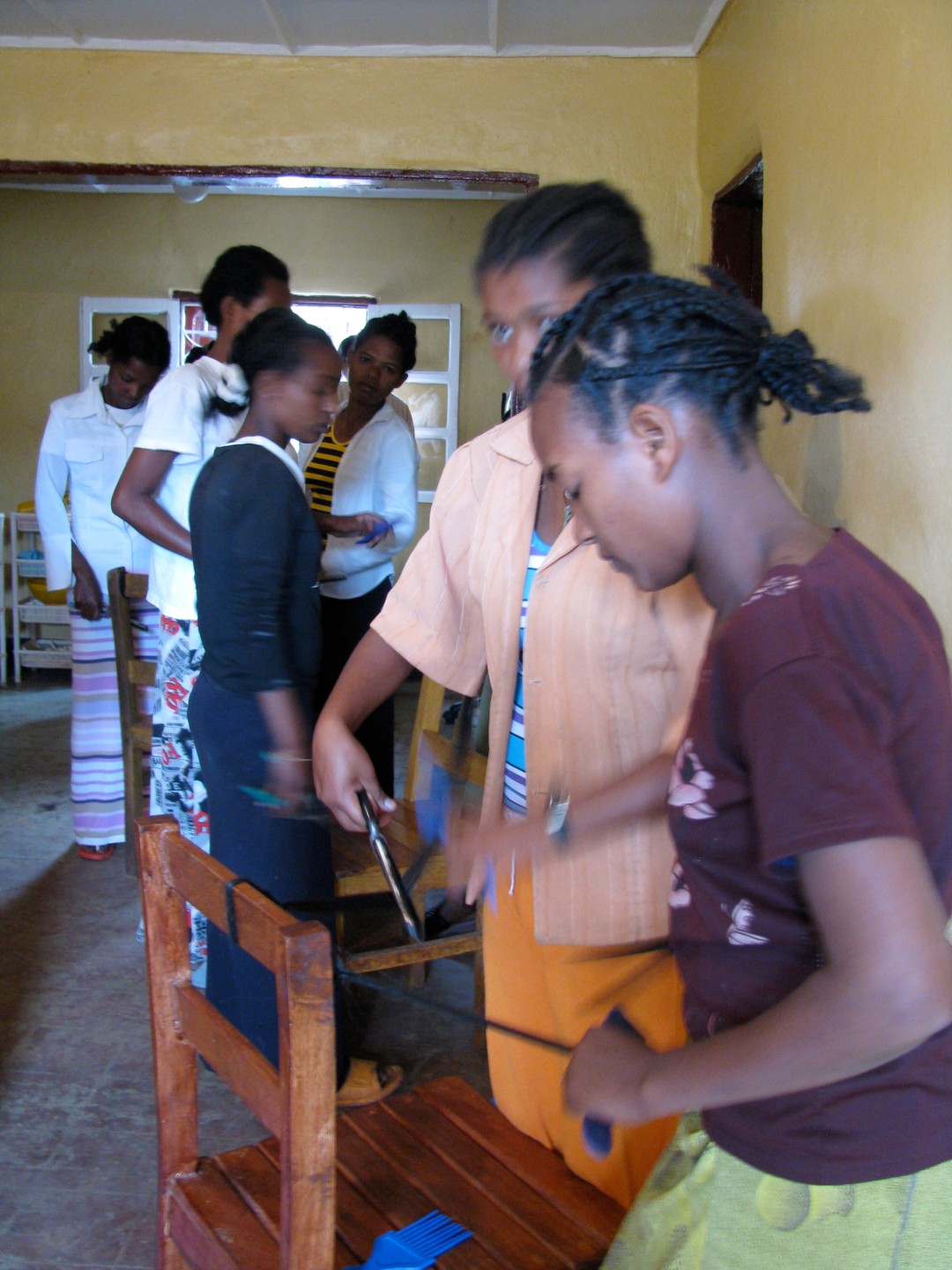Training for podoconiosis patients
The originality of the project was its concern with the rehabilitation of patients who had been successfully treated for podoconiosis. The aim was to enable 100 young patients to undergo vocational training and for 280 women to access interest-free microcredit in order to regain their financial independence. In addition to vocational training, health education was an important component of the program for patients to become agents of change in their communities.
The objective of the microcredit programme was exceeded, as 280 women plus 140 men benefited from the initiative. They were all patients who were cured of podoconiosis, carefully selected and nominated by their community. Through the loans they were able to regain financial independence. Forty young women and 60 young men received six weeks training as hairdressers and barbers. Some of the alternative training courses for older patients were reduced due to inflation. Nevertheless, 26 women were trained in poultry farming.
The Mossy Foot Treatment and Prevention Association (MFTPA) based in the south of Ethiopia has been active in the treatment and prevention of podoconiosis, a highly debilitating disease since 1999.
Type
Health / Community DevelopmentDuration
April 2011 - April 2012Location
Wolaita Sodo / EthiopiaWith whom
The Mossy Foot Treatment and Prevention Association (MFTPA)





Ethiopia
Population
105 million (2017)
Per Capita Income
USD 740/year (2017)
Poverty rate *
23% (2015)
Literacy rate
39% (2016)
Human Development Index
173rd out of 189 countries (2018)
Ethiopia is the second most populated country in Sub–Saharan Africa and one of the world’s poorest countries. Although economic growth is hindered by chronic food insecurity, it has enabled positive trends in reducing poverty, in both urban and rural areas. The absolute poverty rate dropped from 46% in 1995 to 8.7% 2016. Over the past 20 years, primary school enrolment has quadrupled, child mortality has been halved and access to clean water has doubled. Good progress has also been made in the fight against malaria and HIV/AIDS. The country is home to the largest refugee population on the continent (730,000 registered refugees), putting additional pressure on natural resources suffering from climate-related shocks.
Sources: World Food Program, UNICEF, World Bank, 2016 Human Development Report, Human Development Indices and Indicators (2018 Statistical Update)
*The percentage of the population living below the national poverty line.